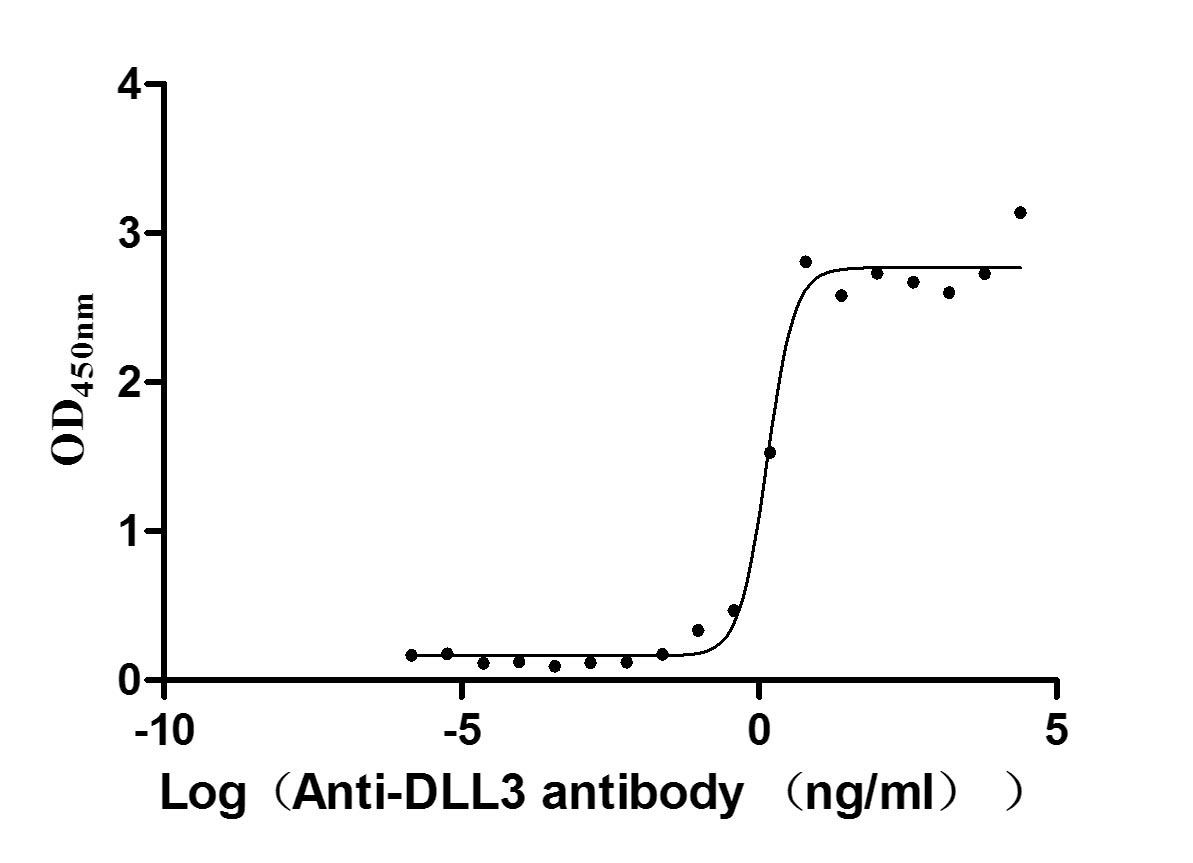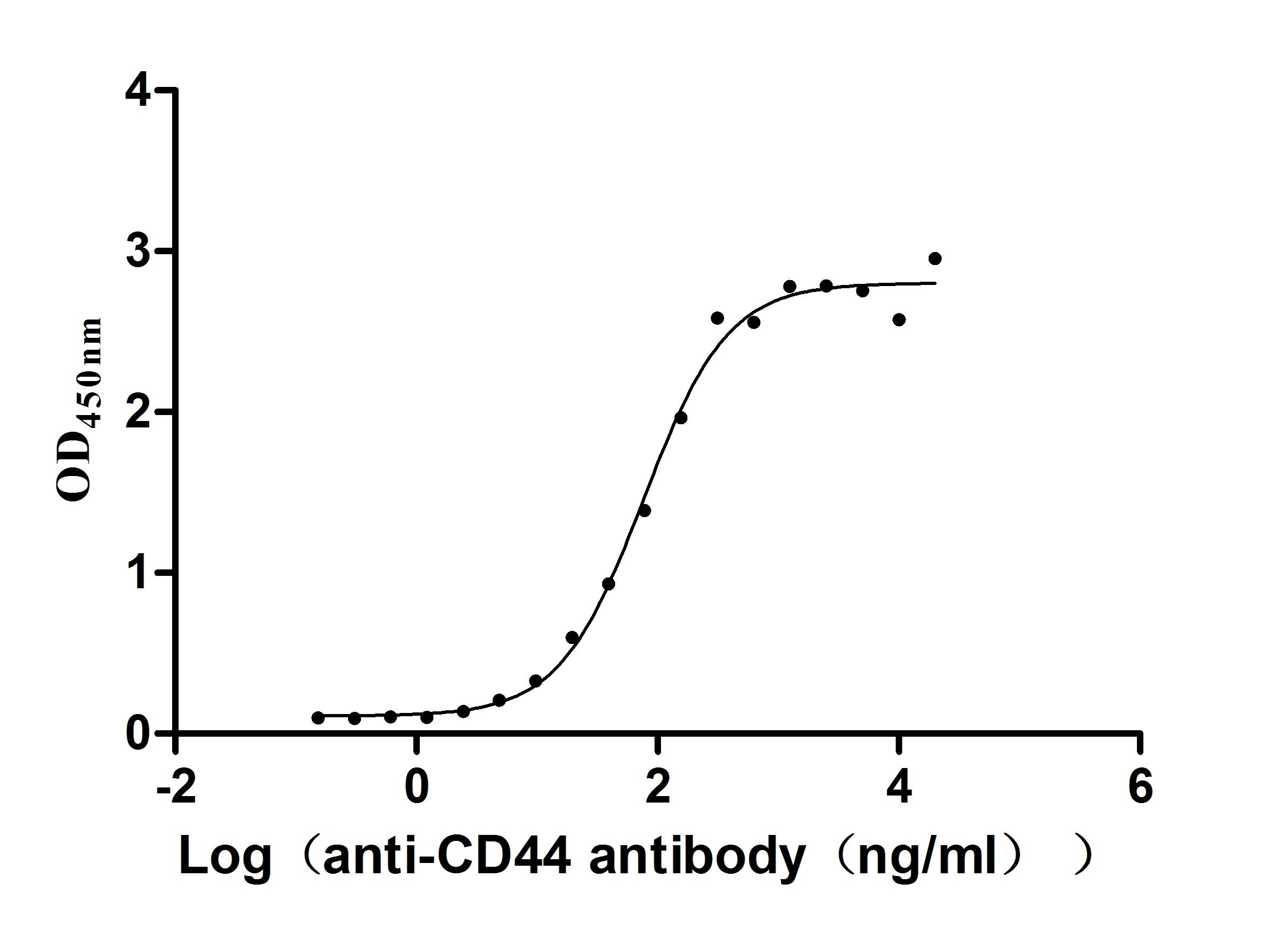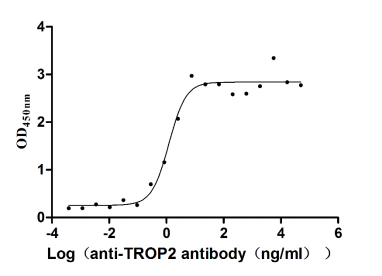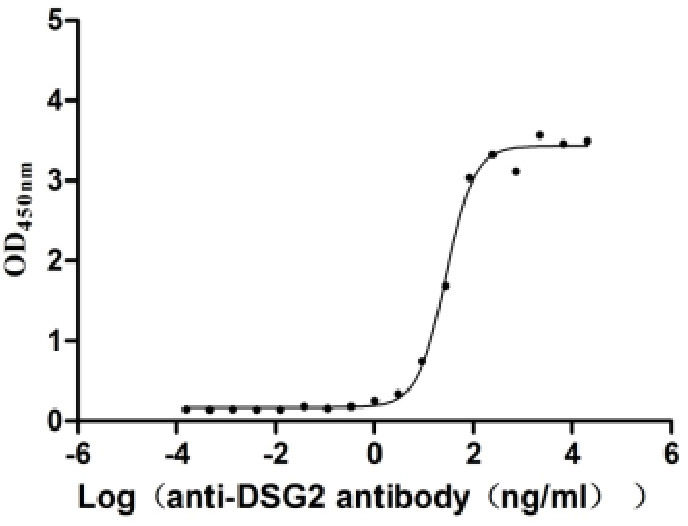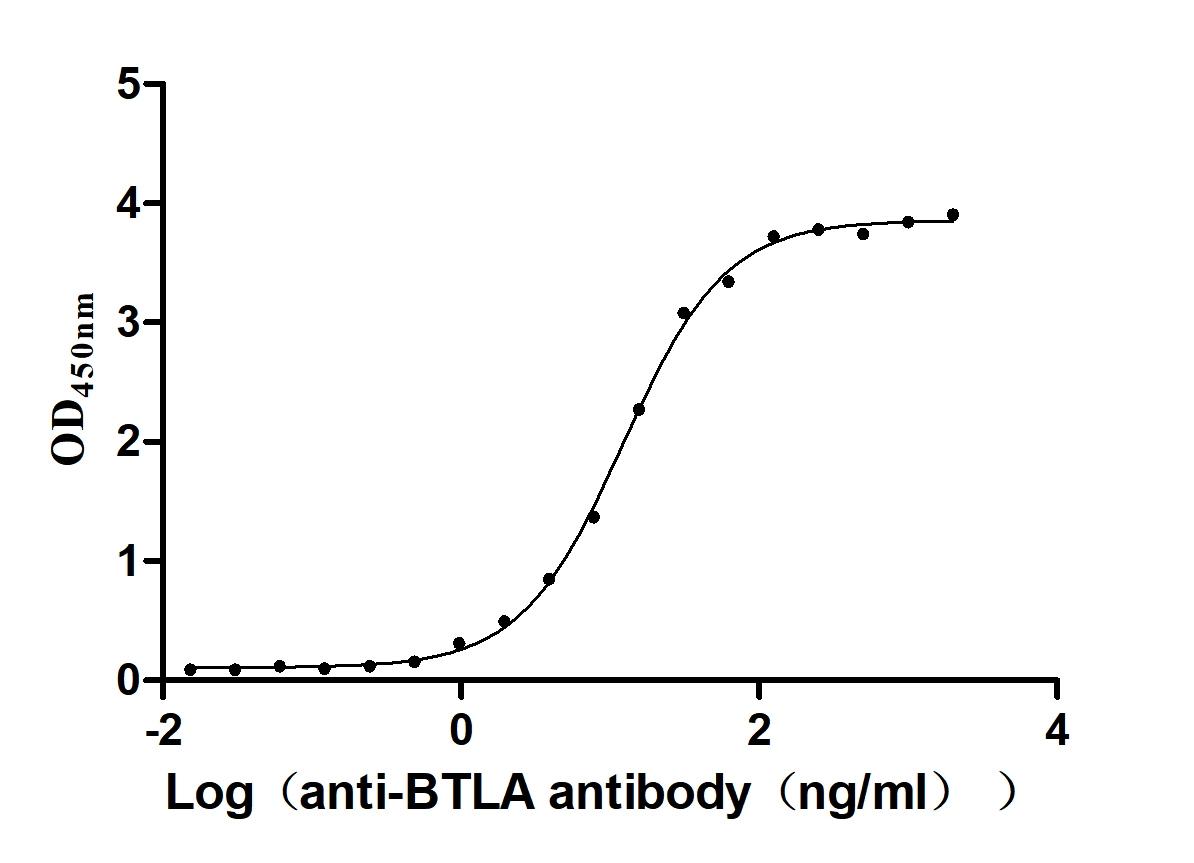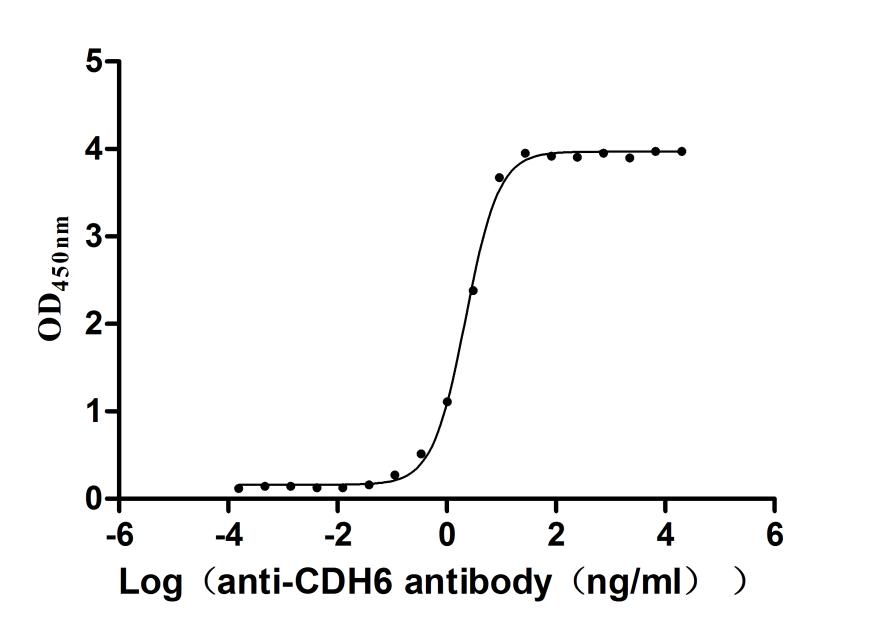Recombinant Mouse Transient receptor potential cation channel subfamily A member 1 (Trpa1), partial
-
中文名稱:小鼠Trpa1重組蛋白
-
貨號:CSB-YP806866MO
-
規(guī)格:
-
來源:Yeast
-
其他:
-
中文名稱:小鼠Trpa1重組蛋白
-
貨號:CSB-EP806866MO
-
規(guī)格:
-
來源:E.coli
-
其他:
-
中文名稱:小鼠Trpa1重組蛋白
-
貨號:CSB-EP806866MO-B
-
規(guī)格:
-
來源:E.coli
-
共軛:Avi-tag Biotinylated
E. coli biotin ligase (BirA) is highly specific in covalently attaching biotin to the 15 amino acid AviTag peptide. This recombinant protein was biotinylated in vivo by AviTag-BirA technology, which method is BriA catalyzes amide linkage between the biotin and the specific lysine of the AviTag.
-
其他:
-
中文名稱:小鼠Trpa1重組蛋白
-
貨號:CSB-BP806866MO
-
規(guī)格:
-
來源:Baculovirus
-
其他:
-
中文名稱:小鼠Trpa1重組蛋白
-
貨號:CSB-MP806866MO
-
規(guī)格:
-
來源:Mammalian cell
-
其他:
產(chǎn)品詳情
-
純度:>85% (SDS-PAGE)
-
基因名:Trpa1
-
Uniprot No.:
-
別名:Trpa1; Anktm1; Transient receptor potential cation channel subfamily A member 1; Ankyrin-like with transmembrane domains protein 1; Wasabi receptor
-
種屬:Mus musculus (Mouse)
-
蛋白長度:Partial
-
蛋白標(biāo)簽:Tag?type?will?be?determined?during?the?manufacturing?process.
The tag type will be determined during production process. If you have specified tag type, please tell us and we will develop the specified tag preferentially. -
產(chǎn)品提供形式:Lyophilized powder
Note: We will preferentially ship the format that we have in stock, however, if you have any special requirement for the format, please remark your requirement when placing the order, we will prepare according to your demand. -
復(fù)溶:We recommend that this vial be briefly centrifuged prior to opening to bring the contents to the bottom. Please reconstitute protein in deionized sterile water to a concentration of 0.1-1.0 mg/mL.We recommend to add 5-50% of glycerol (final concentration) and aliquot for long-term storage at -20℃/-80℃. Our default final concentration of glycerol is 50%. Customers could use it as reference.
-
儲存條件:Store at -20°C/-80°C upon receipt, aliquoting is necessary for mutiple use. Avoid repeated freeze-thaw cycles.
-
保質(zhì)期:The shelf life is related to many factors, storage state, buffer ingredients, storage temperature and the stability of the protein itself.
Generally, the shelf life of liquid form is 6 months at -20°C/-80°C. The shelf life of lyophilized form is 12 months at -20°C/-80°C. -
貨期:Delivery time may differ from different purchasing way or location, please kindly consult your local distributors for specific delivery time.Note: All of our proteins are default shipped with normal blue ice packs, if you request to ship with dry ice, please communicate with us in advance and extra fees will be charged.
-
注意事項:Repeated freezing and thawing is not recommended. Store working aliquots at 4°C for up to one week.
-
Datasheet :Please contact us to get it.
靶點詳情
-
功能:Receptor-activated non-selective cation channel involved in pain detection and possibly also in cold perception, oxygen concentration perception, cough, itch, and inner ear function. Shows 8-fold preference for divalent over monovalent cations. Has a central role in the pain response to endogenous inflammatory mediators and to a diverse array of irritants, such as allylthiocyanate (AITC) found in mustard oil or wasabi, cinnamaldehyde, diallyl disulfide (DADS) from garlic, and acrolein, an irritant from tears gas and vehicule exhaust fumes. Acts also as an ionotropic cannabinoid receptor by being activated by delta(9)-tetrahydrocannabinol (THC), the psychoactive component of marijuana. Is activated by a large variety of structurally unrelated electrophilic and non-electrophilic chemical compounds. Electrophilic ligands activate TRPA1 by interacting with critical N-terminal Cys residues in a covalent manner, whereas mechanisms of non-electrophilic ligands are not well determined. May be a component for the mechanosensitive transduction channel of hair cells in inner ear, thereby participating in the perception of sounds. Probably operated by a phosphatidylinositol second messenger system.
-
基因功能參考文獻(xiàn):
- The present study determined that cold hypersensitivity in the early phase of DPN is mediated through the TRPA1 sensitization during diabetic vascular impairment in the STZ-induced diabetic mouse model. PMID: 29968518
- Study utilizing large-scale recessive genetics screen of randomly mutagenized mice using a highly robust 2-methyl-2-thiazoline-evoked innate fear assay found that the Trpa1-mediated chemosensory system, in addition to classical olfactory system, plays a central role in mediating predator odor-evoked innate fear/defensive behaviors in mice. PMID: 29795268
- Activation of Schwann cell TRPA1 evoked NADPH oxidase 1-dependent H2O2 release, and silencing or blocking Schwann cell NOX1 attenuated nerve injury-induced macrophage infiltration and oxidative stress. PMID: 29192190
- Results indicated that inhibition of TRPA1 could prevent Dox-induced cardiomyocyte apoptosis in mice by inhibiting oxidative stress, inflammation, and ER stress. PMID: 29682158
- Blocking prolyl hydroxylation reveals TRPA1 sensitization to reactive oxygen species (ROS), which enables TRPA1 to convert ROS signalling into cold sensitivity. PMID: 27628562
- The stimulation of TRPA1 ion channels in CMs results in activation of a CaMKII-dependent signaling pathway resulting in modulation of intracellular Ca(2+) availability and handling leading to increases in CM contractile function. Cardiac TRPA1 ion channels may represent a novel therapeutic target for increasing the inotropic and lusitropic state of the heart. PMID: 28792844
- Systemic desensitization through TRPA1 channels by capsazepine and mustard oil - a novel strategy against inflammation and pain. PMID: 27356469
- The results obtained with dorsal root ganglia neurons from transient receptor potential cation channel, subfamily A, member 1 channels (TRPA1)-/- mice, TRPM8-/- mice, and wild-type mice, using selective antagonists of TRPA1 and TRPM8 channels, as well as HEK293 cells stably expressing human, TRPA1, indicate that responses to cold, are mediated by TRPA1 channels. PMID: 28408328
- This study demonstrated that botulinum neurotoxin A doenregulation of Trpa1 in the dorsal root ganglia in mice PMID: 28410268
- The TRPA1 channel may play a crucial role in neuronal development and oligodendrocyte maturation and be a potential regulator in emotion, cognition, learning and memory, and social behavior. PMID: 27194300
- Results identify AMPK as a previously unknown regulator of TRPA1 channels. AMPK modulation of TRPA1 could thus serve as an underlying mechanism and potential therapeutic molecular target in painful diabetic neuropathy. PMID: 29025860
- This study demonstrated that TRPA1 regulates mitogen-activated protein kinase pathways, as well as transcription factor c-Jun and a proapoptotic Bcl-2 family member (Bak) expression resulting in enhanced oligodendrocyte apoptosis. PMID: 27568827
- Reducing agents reverse thiazolidine-induced TRPA1 activation, and mutagenesis studies show that nucleophilic cysteine residues in TRPA1 are critical, suggesting an activation mechanism involving thioreactive chemical reactions. In vivo studies show that thiazolidine induces acute pain and inflammation in mouse and these responses are specifically dependent on TRPA1. PMID: 28130183
- Data show that trigeminal transient receptor potential ankyrin 1 in the nasal cavity play an essential role in irritant-induced bradypnea. PMID: 28039411
- results provide evidence from two complementary and independent Advillin-Cre mouse lines indicating that TRPA1 specifically expressed within sensory neurons is essential for normal baseline sensitivity to multiple types of mechanical stimuli but not hot or cold temperature stimuli. PMID: 28303259
- This mechanistic pathway underlying TRPA1-mediated vasodilatation may be important in understanding the role of TRPA1 in pathophysiological situations. PMID: 27189253
- The TRPA1 ion channel is expressed in CD4+ T cells and restrains T-cell-mediated colitis through inhibition of TRPV1. PMID: 27325418
- TRPA1 channels trigger vesicle release in sensory neurons by releasing Calcium from lysosome-like organelles. PMID: 27799370
- Single exposure to acrolein causes cardiac dysfunction through TRPA1 activation. PMID: 27746315
- study revealed that TRPA1 positively modulates the mechanical hyperalgesia induced by B1 receptor activation in the spinal cord and that the classical GPCR downstream molecules PMID: 27823962
- findings propose that, in the constriction of the infraorbital nerve model of trigeminal neuropathic pain, pain-like behaviours are entirely mediated by the TRPA1 channel. PMID: 26984186
- Activation of enterocyte transient receptor potential cation channel subfamily A member 1(TRPA1) by food components has the potential to facilitate nutrient absorption PMID: 27735854
- contributes to cinnamaldehyde effects in LPS-induced systemic inflammatory response syndrome PMID: 26922677
- Our study demonstrated the novel role of the TRPA1 channel in astrocytes under an amyloid beta-elicited inflammatory environment and thus its potential involvement in Alzheimer's disease pathogenesis PMID: 27121378
- Cold exposure caused mechanical hyperalgesia in an experimental arthritic model in a TRPA1-dependent manner. PMID: 26754745
- In TRPA1 knock-out mice hypersensitivity and impaired weight bearing in osteoarthritis limbs were significantly decreased. PMID: 26746673
- Trpa1 is involved in the ocular itch response in allergic conjunctivitis. PMID: 26521042
- TRPA1 was found to mediate acute inflammation and the development of degenerative cartilage changes and joint pain in MIA-induced experimental OA in the mouse. PMID: 26521748
- exposure to cigarette smoke extract initially causes an increase in the extracellular level of ROS, which in turn activates lung epithelial TRPA1 PMID: 26504357
- K14Cre-Trpa1fl/fl mice had a big mechanosensitivity deficit at the behavioral and primary afferent levels, and decreased mechanically-evoked ATP release. This is not due to low Trpa1 because these cells even in controls have little if any Trpa1. PMID: 26978657
- nicotinic receptors contribute to the sensory effects of cigarette smoke on the trachea, which are dominated by TRPA1 PMID: 26472811
- propofol-induced depressor responses in vivo are predominantly mediated by TRPA1 ion channels. PMID: 25830814
- The TRPA1 channel mediates the analgesic action of dipyrone and pyrazolone derivatives PMID: 25765567
- Deoxynivalenol induced cholecystokinin and glucagon-like peptide 1 release by enteroendocrine cells in mediated by casR/TRPA1 signaling. PMID: 25787141
- TRPA1 mediates MSU crystal-induced inflammation and pain in experimental models supporting the role of TRPA1 as a potential mediator and a drug target in gout flare. PMID: 25658427
- TRPA1 is essential for the vascular response to environmental cold exposure. PMID: 25501034
- Lipopolysaccharide exerts fast, membrane delimited, excitatory actions via TRPA1, a transient receptor potential cation channel that is critical for transducing environmental irritant stimuli into nociceptor activity. PMID: 24445575
- TRPA1 seems to be a sentinel for environmental chemicals and induces avoidance behaviors and waking by way of the trigeminal system. PMID: 24172941
- Activation of HTR7 promoted opening of the ion channel TRPA1, which in turn triggered itch behaviors. Acute itch triggered by serotonin or a selective serotonin reuptake inhibitor required both HTR7 and TRPA1, as did development of atopic dermatitis. PMID: 26074006
- TRPA1 is a major mediator of the proinflammatory/proalgesic actions of aromatase inhibitors PMID: 25484020
- TRPA1 is upregulated in colitis and its activation exerts protective roles by decreasing the expressions of several proinflammatory neuropeptides, cytokines and chemokines PMID: 25265225
- The blockade of TRPA1 signalling mediates antidepressant- and anxiolytic-like actions in mice PMID: 24846744
- TRPA1 activation caused an increase in GLP-1 secretion from primary murine intestinal cultures and GLUTag cells, an effect that was abolished in cultures from trpa1(-/-) mice PMID: 25325736
- TRPA1-mediated lipid increases may underlie mechanical sensitization with inflammation. PMID: 25271163
- Ischemia-reperfusion in a hindlimb model, induces oxidative stress, which activates TRPA1 channels to provoke postischemic licking. PMID: 25228635
- In a model of interstitial cystitis related bladder hyperalgesia, there was an increase in TRPA1 expression, and a TRPA1 antagonist reverse the hyperalgesia. PMID: 24704367
- TRPA1 activation by H2O2 mediates the entire inflammatory response in an acute gout attack rodent model PMID: 24780252
- Unsaturated aldehydes are potent aliphatic stimulants for cholecystokinin secretion through the activation of TRPA1. PMID: 24357536
- TRPA1 is contained in very specific enteroendocrine cell populations. PMID: 24442491
- The study unravelled the role of TRPA1 in shaping the ventilatory response to low-intensity hypoxia, liable to be mediated by vagally innervated respiratory chemosensors of lower functional rank. PMID: 24245768
顯示更多
收起更多
-
亞細(xì)胞定位:Cell membrane; Multi-pass membrane protein.
-
蛋白家族:Transient receptor (TC 1.A.4) family
-
組織特異性:Expressed in inner ear (at protein level). Specifically expressed in a subset of nociceptive neurons. Expressed in the same neurons that TRPV1. In contrast, it is not expressed in neurons expressing TRPM8. Expressed in the superior cervical ganglion of va
-
數(shù)據(jù)庫鏈接:
Most popular with customers
-
Recombinant Human Delta-like protein 3 (DLL3), partial (Active)
Express system: Mammalian cell
Species: Homo sapiens (Human)
-
Recombinant Macaca fascicularis CD44 antigen (CD44), partial (Active)
Express system: Mammalian cell
Species: Macaca fascicularis (Crab-eating macaque) (Cynomolgus monkey)
-
Recombinant Human Tumor-associated calcium signal transducer 2 (TACSTD2), partial (Active)
Express system: Mammalian cell
Species: Homo sapiens (Human)
-
Recombinant Human Desmoglein-2 (DSG2), partial (Active)
Express system: Mammalian cell
Species: Homo sapiens (Human)
-
Recombinant Human B- and T-lymphocyte attenuator(BTLA), partial (Active)
Express system: Mammalian cell
Species: Homo sapiens (Human)
-
Recombinant Macaca fascicularis Cadherin 6(CDH6),partial (Active)
Express system: Mammalian cell
Species: Macaca fascicularis (Crab-eating macaque) (Cynomolgus monkey)


